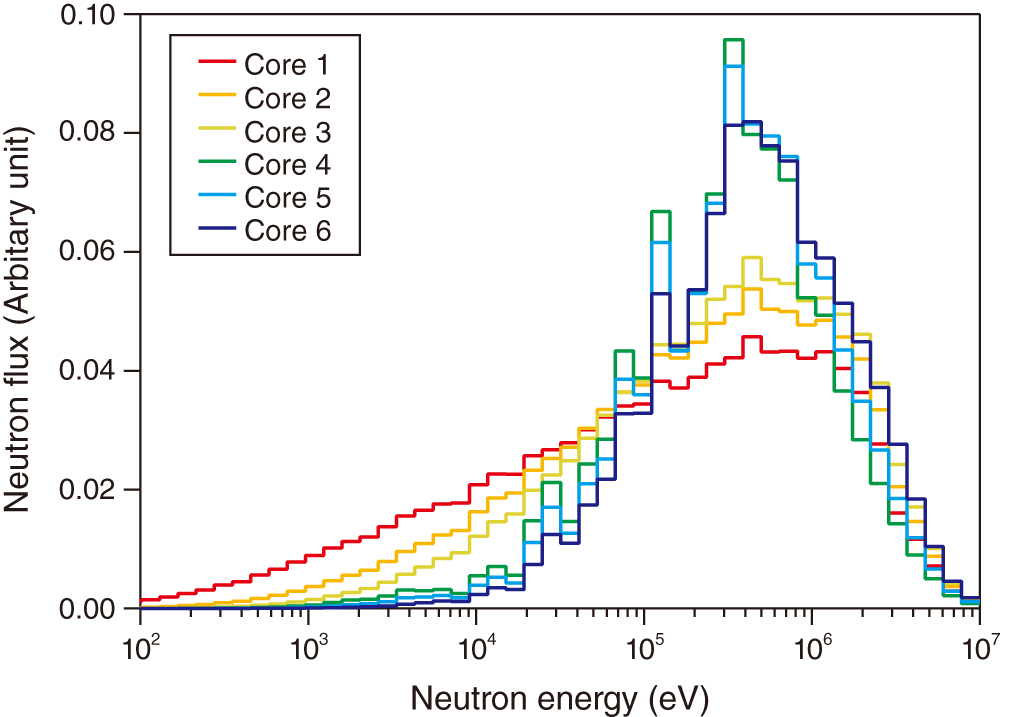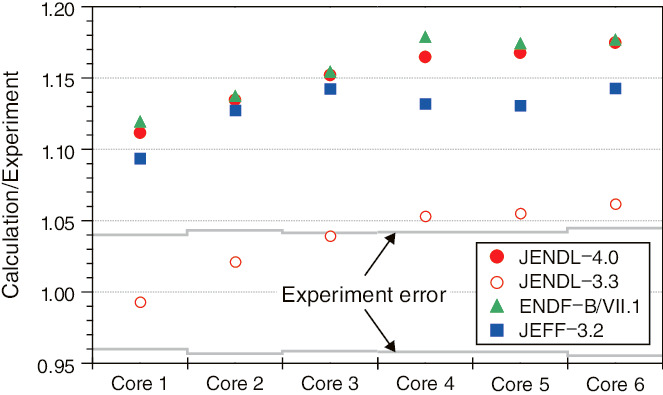
Fig.4-6 Energy distribution of neutron flux at a core center

Fig.4-7 An example of a comparison between experimental and calculated values for the fission-rate ratio of 244Cm to 239Pu
High-level waste (HLW) discharged from nuclear power plants contains minor actinides (MAs), such as americium (Am), neptunium (Np), and curium (Cm), which have long-lived radioactive toxicity with half-lives of up to 2 million years. Partitioning and transmutation (P&T) is a key technology for separating long-lived nuclides from the HLW and transmuting them into short-lived or stable nuclides through fission reactions. Based on nuclear transmutation, we investigate an accelerator-driven system (ADS) to minimize the environmental burden and toxic risk due to HLW.
The probability of causing nuclear fission, which is called the fission cross-section, depends on the energies of incident neutrons. In particular, the fission cross-sections of MAs are important nuclear data required for the core design of nuclear-transmutation systems. To evaluate the reliability of these nuclear data, it is effective to compare the calculated value using nuclear data with experimental values measured using critical assemblies.
Using the fast critical assembly (FCA), fission-rate ratios for trans-uranium (TRU) elements including MAs were measured in several experimental cores. Each core consisted of a simple combination of fuel and diluent materials such as graphite or stainless steel, in which neutrons lose energy through collisions.
The neutron spectra at the central core shift gradually by varying the combination of loaded fuel and diluent, as shown in Fig.4-6. To widely utilize experimental data to validate the fission cross-sections of TRU, we developed benchmark models and analyzed them using the Japanese Evaluated Nuclear Data Library (JENDL) developed at JAEA, as well as the latest foreign nuclear-data-libraries, ENDF/B-VII.1 (US) and JEFF-3.2 (Europe).
For the fission-rate ratios of 237Np to 239Pu, the calculation values from all libraries were found to be in good agreement with experimental values. As for the fission-rate ratios of 241Am and 243Am to 239Pu, all libraries slightly underestimated the experimental values. On the other hand, analyses of the fission-rate ratios of 244Cm to 239Pu showed that the latest libraries including JENDL-4.0 resulted in obvious overestimations by more than 10%, while the calculations by JENDL-3.3 (old version) were almost consistent with experimental values (Fig.4-7). Furthermore, the overestimated fission-rate ratios of 244Cm were revealed to be caused by the larger fission cross-sections of 244Cm around 1 MeV.
The TRU data measured using FCA are expected help improve the accuracy of fission cross-sections of TRU by taking advantage of their unique characteristics with systematically changed neutron spectra.